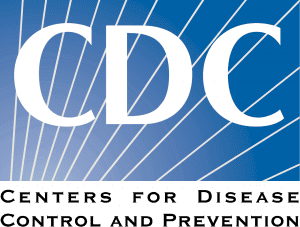- The Effect of Semaglutide on Mortality and COVID-19–Related Deaths: An Analysis From the SELECT Trial
This study sought to assess the effect of semaglutide 2.4 mg on all-cause death, cardiovascular (CV) death, and non-CV death, including subcategories of death and death from coronavirus disease-2019 (COVID-19). Semaglutide is sold under the brand name OZEMPIC by Novo-Nordisk. Semaglutide belongs to a class of medications known as glucagon-like peptide-1 (GLP-1) receptor agonists. It mimics the GLP-1 hormone that is released in the gastrointestinal tract in response to eating. One role of GLP-1 is to prompt the body to produce more insulin, which reduces blood glucose (sugar). GLP-1 in higher amounts also interacts with the parts of the brain that reduce appetite and signal a feeling of fullness. The SELECT (Semaglutide Effects on Cardiovascular Outcomes in Patients With Overweight or Obesity) trial randomized 17,604 participants ≥45 years of age with a body mass index ≥27 kg/m2 with established CV disease but without diabetes to once-weekly subcutaneous semaglutide 2.4 mg or placebo; the mean trial duration was 3.3 years. Adjudicated causes of all deaths, COVID-19 cases, and associated deaths were captured prospectively. Of 833 deaths, 485 (58%) were CV deaths, and 348 (42%) were non-CV deaths. Participants assigned to semaglutide vs placebo had lower rates of all-cause death (HR: 0.81; 95% CI: 0.71-0.93), CV death (HR: 0.85; 95% CI: 0.71-1.01), and non-CV death (HR: 0.77; 95% CI: 0.62-0.95). Semaglutide did not reduce incident COVID-19; however, among participants who developed COVID-19, fewer participants treated with semaglutide had COVID-19–related serious adverse events (232 vs 277; P = 0.04) or died of COVID-19 (43 vs 65; HR: 0.66; 95% CI: 0.44-0.96).
- Effectiveness of COVID-19 Vaccines to Prevent Long COVID: Data from Norway
Data from more than 20 million participants has shown that COVID-19 vaccines consistently prevent Long COVID symptoms in adults, with analyses conducted across three European countries (Estonia, Spain, and the UK). Here, they show further reproducibility and report results from applying the same analyses to the Norwegian Linked Health Registries at University of Oslo, covering the entire Norwegian population of approximately 5·4 million inhabitants. A total of 2,364,651 vaccinated and 1,532,935 unvaccinated individuals in Norway were included and found that vaccination with any COVID-19 vaccine (namely BNT162b2, mRNA-1273, and ChAdOx1) reduced the risk of developing Long COVID symptoms across all study cohorts: the meta-analytic (sHR) was 0·64, so a 36% decrease in Long COVID. - Fibrin Drives Thromboinflammation and Neuropathology in COVID-19
Life-threatening thrombotic events and neurological symptoms are prevalent in COVID-19 and are persistent in patients with Long COVID experiencing post-acute sequelae of SARS-CoV-2 infection. Here these investigators show that fibrin binds to the SARS-CoV-2 spike protein, forming proinflammatory blood clots that drive systemic thromboinflammation and neuropathology in COVID-19. Fibrin promotes neuroinflammation and neuronal loss after infection, as well as innate immune activation in the brain and lungs independently of active infection. A monoclonal antibody targeting the inflammatory fibrin domain provided protection from microglial activation and neuronal injury, as well as from thromboinflammation in the lung after infection. Thus, fibrin drives inflammation and neuropathology in SARS-CoV-2 infection, and fibrin-targeting immunotherapy may represent a therapeutic intervention for patients with acute COVID-19 and Long COVID. - Post-Acute Sequelae of COVID (PASC or Long COVID): An Evidenced-based Approach
While the acute manifestations of infectious diseases are well known, in some individuals, symptoms can either persist or appear after the acute period. Postviral fatigue syndromes are recognized with other viral infections and are described after coronavirus disease 2019 (COVID-19). A growing number of individuals display symptoms that persist for weeks, months, and years. PASC is a defined syndrome with ongoing, relapsing, or new conditions after documented or diagnosed infection with SARS-CoV-2 with a recognized International Classification of Diseases–10 code, U09.9. There are several recognized biochemical and physiological abnormalities associated with PASC. There are defined risk factors that increase or decrease an individual’s risk for developing PASC. There are interventions that can improve this condition. Here, the authors share the evidence regarding the abnormalities associated with postacute sequelae of COVID-19 (PASC) and therapeutics. They describe physiological and biochemical abnormalities seen in individuals reporting PASC. They describe the several evidence-based interventions to offer patients. It is expected that this growing understanding of the mechanisms driving PASC and the benefits seen with certain therapeutics may not only lead to better outcomes for those with PASC but may also have the potential for understanding and treating other postinfectious sequelae.
Situation Dashboards

World Health Organization (WHO)
Novel Coronavirus (COVID-19) Situation from World Health Organization (WHO)

Johns Hopkins University (JHU)
Coronavirus COVID-19 Global Cases by the Center for Systems Science and Engineering (CSSE) at JHU

COVID-19 in US and Canada
1Point3Acres Real-Time Coronavirus (COVID-19) Updates in US and Canada with Credible Sources

Genomic Epidemiology COVID-19
Genomic Epidemiology of (COVID-19) Maintained by the Nextstrain team, enabled by data from GISAID.





